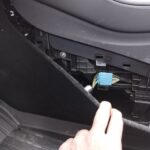For those venturing into the realm of DIY car diagnostics with Bluetooth Low Energy (BLE), the path can seem straightforward until you hit unexpected roadblocks. Many enthusiasts, especially those familiar with platforms like Thunkable, are drawn to the potential of Obd2 Ble adapters for their projects. However, connecting these devices and deciphering their communication protocols can present unique challenges.
Initially, the primary hurdle appears to be data conversion – translating hexadecimal OBD2 data into a human-readable decimal format. While this is a necessary step, as many discover, it’s not the most significant obstacle. The real challenge often lies in establishing a stable connection and understanding the specific command set for BLE-enabled OBD2 adapters.
Many successful BLE projects in the maker community revolve around Arduino and similar microcontrollers. Unfortunately, these examples don’t always translate directly when using platforms like Thunkable, which offer a different approach to BLE connectivity. This is where detailed documentation becomes crucial.
Fortunately, some manufacturers provide comprehensive documentation for their OBD2 devices, detailing the command sets and communication protocols. However, a critical question arises when dealing with BLE versions of these adapters: Do the command sets remain consistent with their non-BLE counterparts? Reference sheets, like those available for the STN1100 chip commonly found in OBD2 adapters, may not explicitly cover the nuances of the low energy models.
While data calculation and conversion can often be managed within platforms like Thunkable, leveraging their block-based programming and potentially external APIs, the fundamental concern remains: Will an OBD2 BLE adapter, such as the OBDLink MX+ Bluetooth adapter, be compatible with Thunkable’s BLE functionality? Furthermore, assuming compatibility, will the command set documented for standard OBD2 devices apply directly to the BLE version?
Understanding these nuances is essential before investing further in OBD2 BLE hardware. For developers and car enthusiasts eager to tap into the potential of wireless OBD2 diagnostics, clarifying these compatibility and command set questions is the key to unlocking successful and insightful vehicle data analysis projects.
